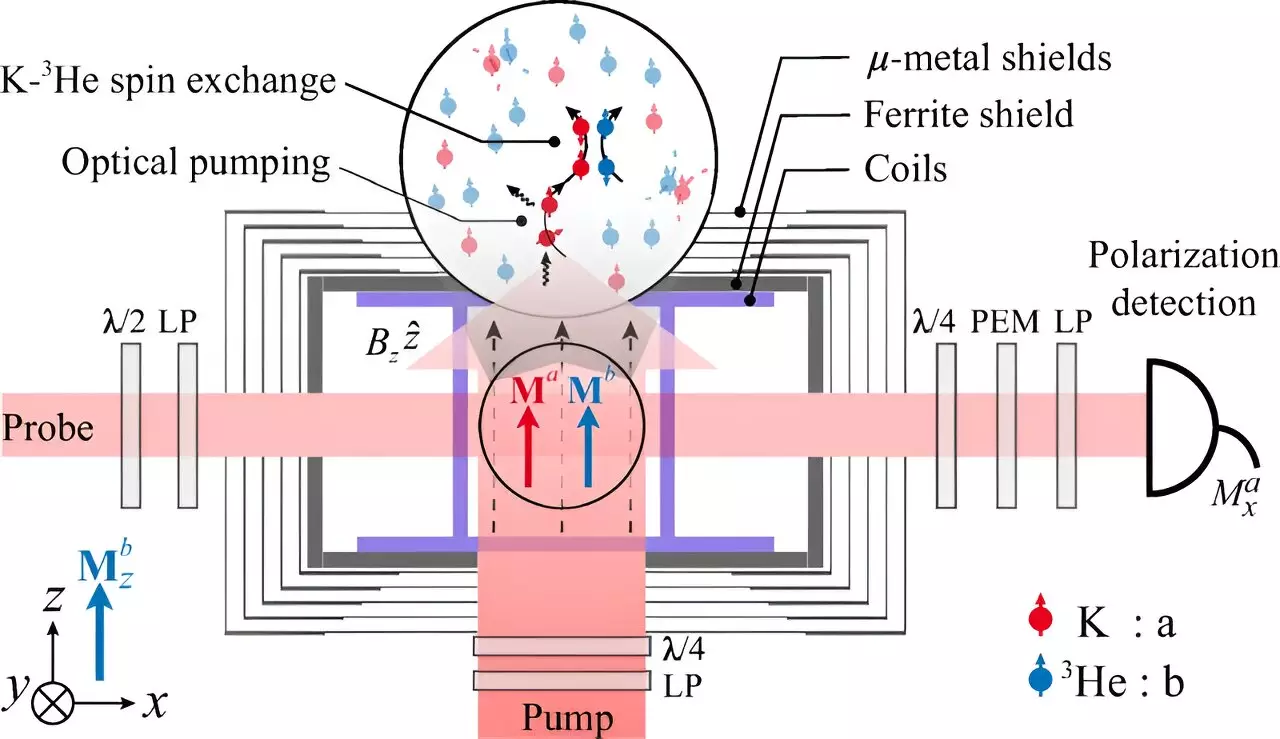In an exciting advancement in the field of precision measurement, a research team led by Prof. Peng Xinhua and Associate Prof. Jiang Min from the University of Science and Technology of China (USTC) has unveiled a novel approach to suppressing magnetic noise interference. Their findings, published in the prestigious journal *Physical Review Letters*, showcase the Fano resonance interference effect, marking a significant leap in our ability to measure weak magnetic signals. This remarkable development comes amidst growing interest in exotic spin interactions that extend beyond the conventional boundaries of particle physics.
Precision measurements involving atomic spins face formidable hurdles, primarily due to the presence of magnetic noise that can obscure faint signals from exotic interactions. These interactions are pivotal for various areas of research, ranging from the search for elusive spin-dark matter particles to understanding potential new forces beyond the standard model of physics. The challenge lies in the fact that many experimental setups are designed to detect extremely weak magnetic fields, which are often masked by background noise. Standard atomic comagnetometers have shown some efficacy in mitigating low-frequency magnetic noise (below 1Hz); however, their effectiveness diminishes as frequency increases, thereby limiting the exploratory capabilities in a vast, largely unexplored regime.
The research team has made a groundbreaking breakthrough with their self-compensation technique, capable of dramatically reducing magnetic noise interference, achieving suppression by more than two orders of magnitude. Utilizing a blend of potassium (K) atoms and helium-3 (3He) gases, the researchers harnessed polarized potassium atoms as a means for both polarization and readout of the nuclear spins of helium. This innovative method exploits spin-exchange collisions to enhance measurement precision, allowing the nuclear spins of helium to effectively follow and mitigate fluctuations in low-frequency magnetic noise.
This technique is particularly compelling as it adjusts not only the magnitude of a bias magnetic field but also optimizes the angle between the detection direction and the externally applied noise frequencies. This dual-faceted approach allows for greater control over magnetic noise interference, successfully elevating the sensitivity of measurements across a broader frequency spectrum—culminating in the notable ability to suppress noise up to frequencies as high as 200Hz.
One of the distinguishing aspects of this work lies in its theoretical foundation, which offers a new perspective on the phenomena observed. The effective suppression of higher-frequency noise is carefully explained through a novel lens of Fabry-Perot resonance interference cancellation. By employing this perspective, the researchers provided a comprehensive theoretical framework that not only clarified existing experimental results but also paved the way for future investigations into spin-related phenomenology.
This advancement in understanding is vital for the scientific community as it offers a rigorous theoretical underpinning that can be applied in further experiments focused on exotic spin interactions. Moreover, the implications of this technique extend beyond just magnetic noise suppression; it suggests that enhanced sensitivity to pseudomagnetic fields may be achieved, potentially elevating detection capabilities to unprecedented levels.
The implications of this research are profound and far-reaching. By facilitating improved measurements, this technique holds promise for significant advancements in areas like dark matter detection and the exploration of fundamental physics. With the potential to observe interactions that were previously obscured by noise, this breakthrough represents not only a methodological enhancement but also a new frontier in the quest to understand the universe at its most fundamental level.
The development of this magnetic noise suppression technique exemplifies the convergence of innovative theoretical insights and practical experimental techniques. Such progress illustrates a transformative moment in precision measurement that could redefine our capabilities in probing the mysteries of both particle physics and the cosmos. As researchers continue to refine these methods, the boundary between known and unknown physics is sure to blur, opening exciting avenues for discovery.


Leave a Reply